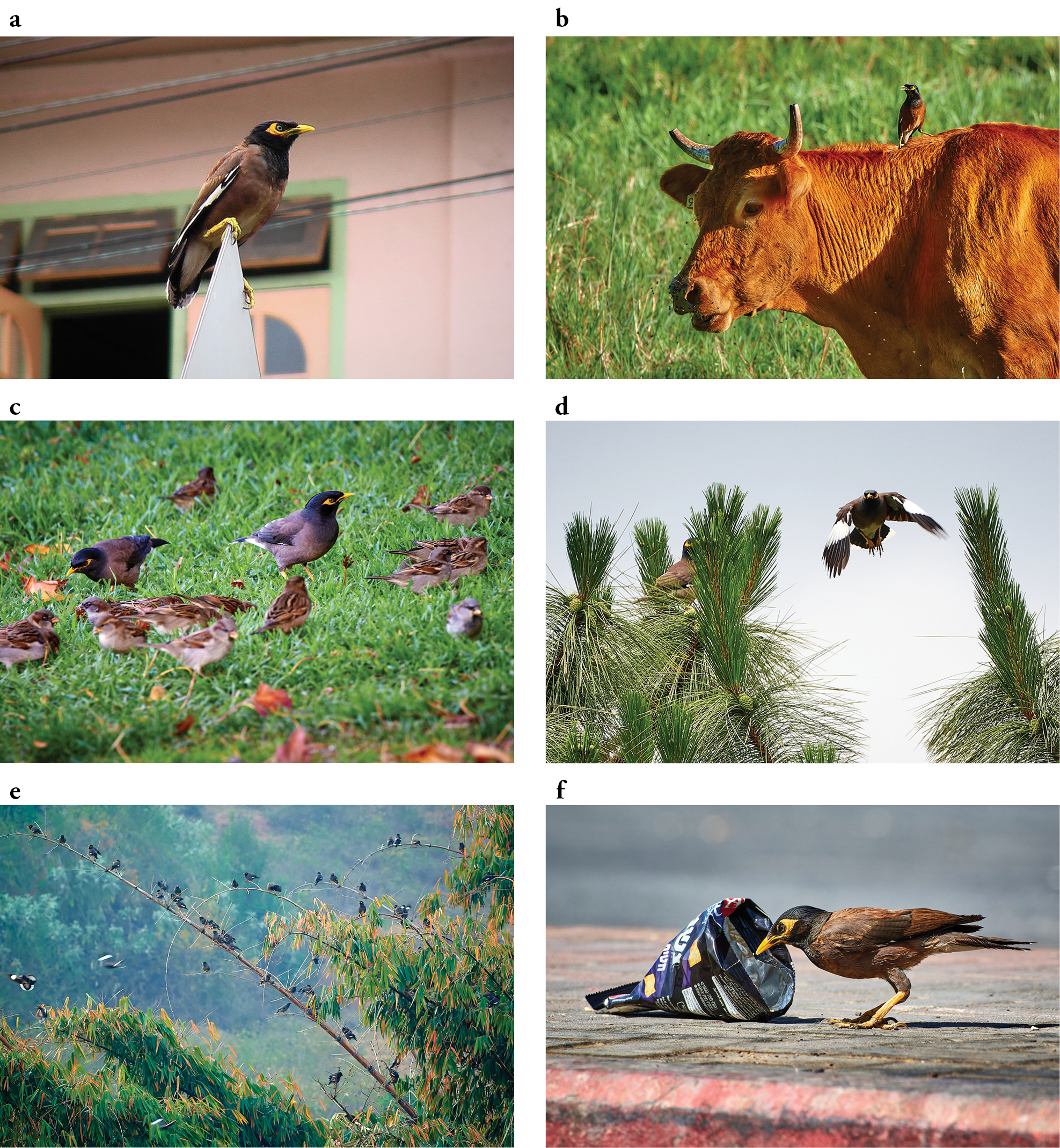
|
||
|
The common myna represents a successfully urbanized species in its native range (a Malaysia) and its flexible ecology allows it to successfully colonize even rural areas on isolated oceanic islands where it was released by humans (b Tahiti). Invasive animal species often share similar, especially urban, habitats (c New Zealand; in this case with introduced House Sparrows, Passer domesticus) and are often found in invasive vegetation (d Madagascar; in this case non-native pines Pinus sp.). Common mynas can reach very high local densities (e Madagascar; a small section of an 800-strong roosting flock), also due to their ability to use novel, anthropogenic food sources (f Israel). Photo credits: T. Grim. |